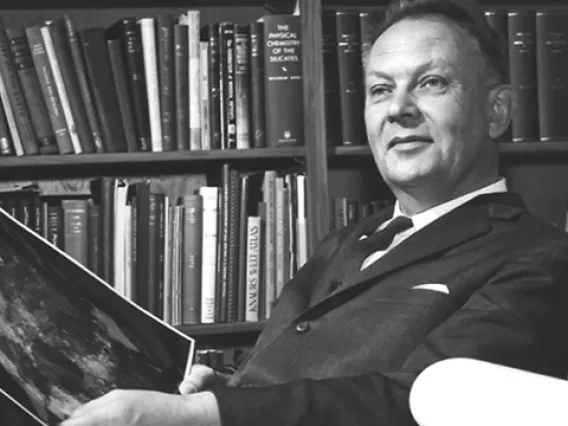LPL Newsletter: July 2019
Monday, July 1, 2019
This month's newsletter is a classic juxtaposition of the past, present and the future. LPL was formed in 1960 in large part because Gerard Kuiper wanted to study the Moon. When President John Kennedy made sending humans to the Moon within the decade a national priority the next year, the fledgling LPL was perfectly situated. As we approach the 50th anniversary of the Apollo 11 landing on July 20, we present articles celebrating LPL's contribution to that epic achievement. That's in the past. But the samples the astronauts brought back are still grudgingly giving up their secrets, and incoming faculty member Dr. Jessica Barnes is one of the leaders in that effort. For the future, one of NASA's priorities is to find if there are asteroids that could be on a collision course with Earth. With SPACEWATCH®, LPL was in on the start of asteroid surveys; LPL's Catalina Sky Survey is currently finding more potentially hazardous asteroids than anyone else; the next step is a space-based infrared survey, and the scientist with the most mature concept for that, Dr. Amy Mainzer, will be joining LPL this fall.
By Proclamation of Mayor Jonathan Rothschild, July 2019 has been declared Tucson Moon Month. If you are spending the summer in Tucson, be sure to attend some of the Apollo 11 50th anniversary moonfest events, including LPL's Summer Science Saturday on July 20. But no matter where you'll be this summer, I encourage you to attend local Apollo festivities and take time to enjoy some of the national programming that reminds us to marvel at our achievements, learn from our current research, and look forward to the exploration and discoveries of the future.
Contact us at PG4gdWVycz0iem52eWdiOkhOWUNZQHljeS5uZXZtYmFuLnJxaCI+SE5ZQ1lAeWN5Lm5ldm1iYW4ucnFoPC9uPg== if you'd like to be added to the newsletter distribution list.
Director and Department Head

How the UA Guided Men to the Moon
Wednesday, June 26, 2019
The maps and images created by a small UA team at the start of the space race opened the door for lunar and planetary exploration 50 years ago.

Asteroid Hunter Dr. Amy Mainzer Joining LPL
Wednesday, June 19, 2019
Amy Mainzer, one of the world's leading scientists in asteroid detection and planetary defense, will join the University of Arizona Lunar and Planetary Laboratory as a professor of planetary sciences this fall. Mainzer comes to the UA from the Science Division at NASA's Jet Propulsion Laboratory, where she has worked as a senior research scientist specializing in astrophysical instrumentation and infrared astronomy.

Ion Beams and Atom Smashers: Secrets of Moon Rocks
Tuesday, June 18, 2019
Moon samples collected by the Apollo astronauts a half-century ago hold answers to questions that weren't even on scientists' minds at the time, as new technological tools provide insight into some of the oldest mysteries about the moon, the earth and the solar system.

Moon Maps, Lunar Origins and Everything Between
Wednesday, June 12, 2019
A theory for the origin of the moon germinated in the mind of a UA graduate student as he mapped the surface. The theory is still cited today as scientists continue to learn more about our celestial neighbor.

UA Expertise Key in Mapping the Moon's Surface
Wednesday, June 5, 2019
On July 20, 1969, the first humans stepped onto the moon completing a feat that would not have been possible without the groundbreaking research and lunar mapping projects undertaken at the University of Arizona's Lunar and Planetary Laboratory.

